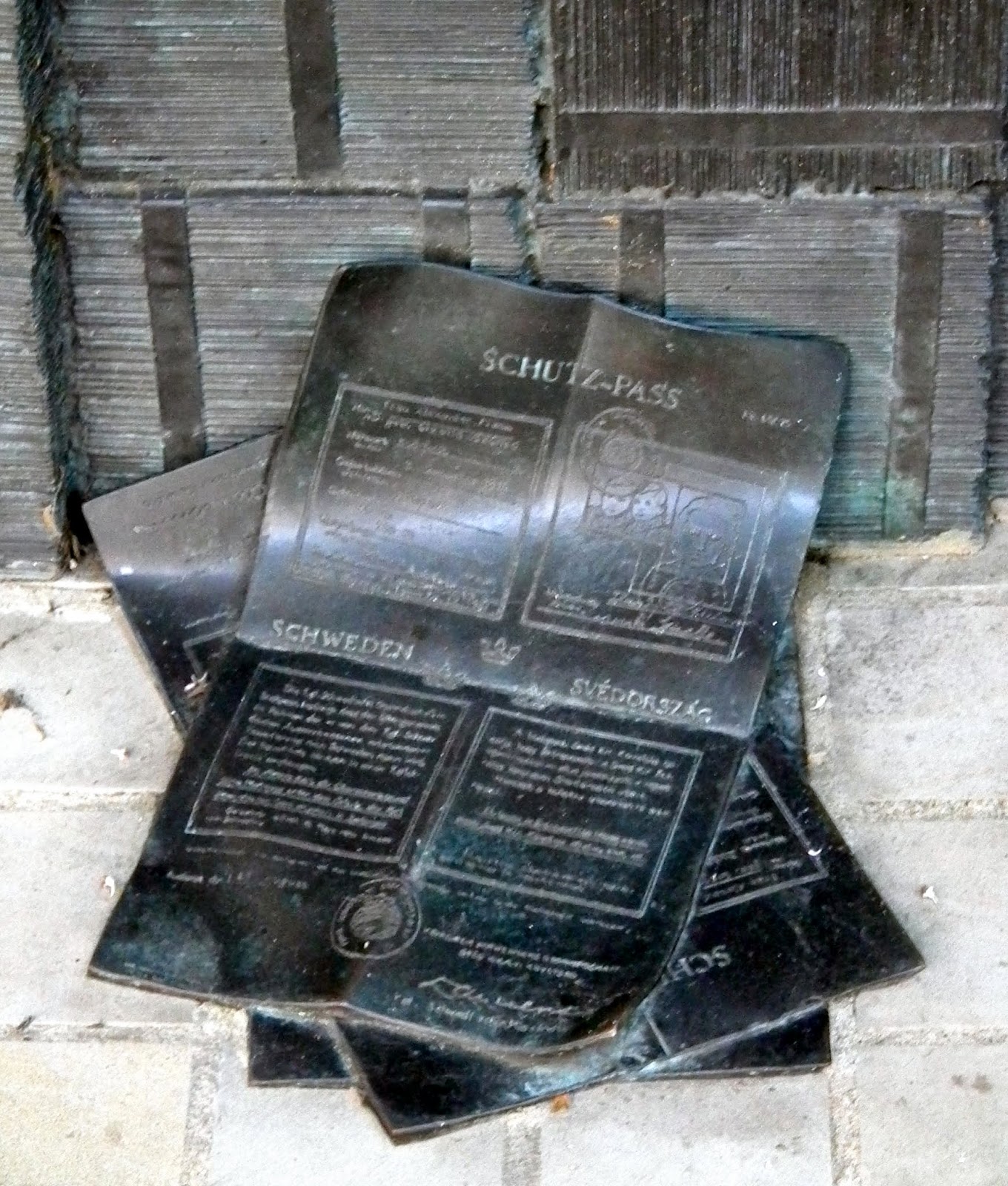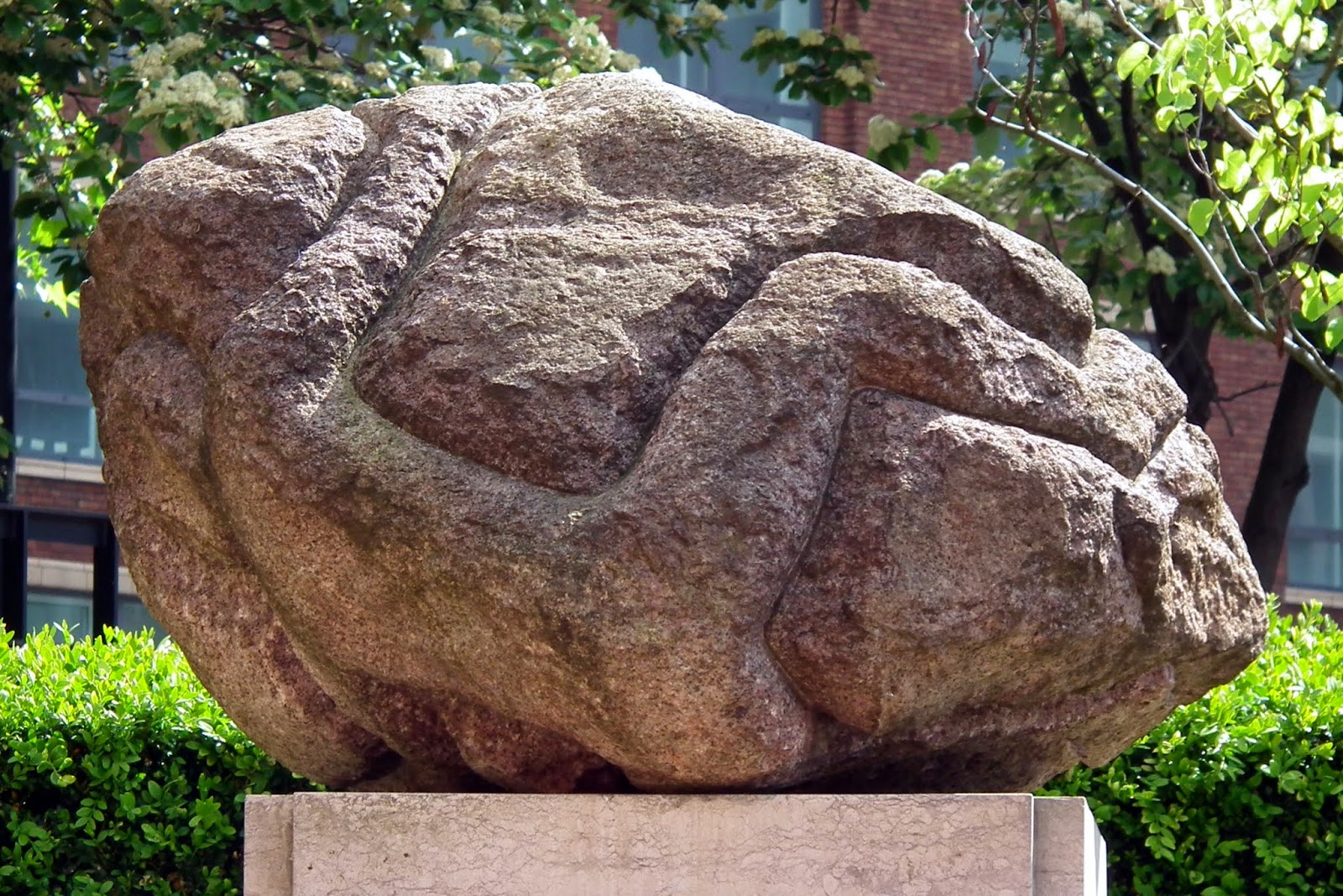In the siege of Budapest in 1944 Raul Wallenberg saved possibly as many as 100,000 Jews from the gas chambers by issuing them with emergency Swedish passports.

 At one point he climbed on a train about to leave for Auschwitz, calmly handing papers into the occupants of unsealed carriages and waving them out to a line of waiting cars, ignoring warnings and shots from German guards and Hungarian Arrow Cross fascists.
At one point he climbed on a train about to leave for Auschwitz, calmly handing papers into the occupants of unsealed carriages and waving them out to a line of waiting cars, ignoring warnings and shots from German guards and Hungarian Arrow Cross fascists.
During the last days of the siege, Wallenberg was taken by the Soviets and was never seen again.
The noble monument by Philip Jackson is a full-length portrait of Wallenberg standing against a concrete wall that is revealed on going behind to be a pile of the passports with a flag draped over. A few lie loose in front, engraved with the words.
Wallenberg is nattily dressed, the epitome of a wealthy businessman. He grasps a bundle of passports in his right hand and holds his coat over them with his left, an apparently confident gesture but his knuckles are tightly clenched.























